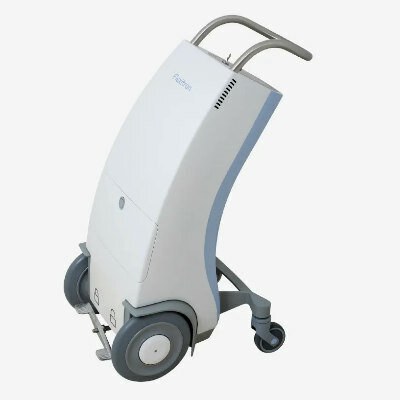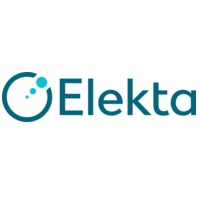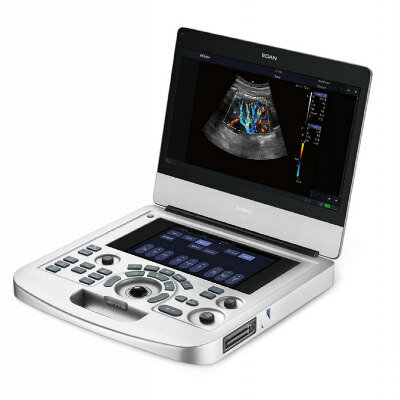Researchers Use Machine Learning to Increase Resolution of OCT Imaging
|
By MedImaging International staff writers Posted on 03 Oct 2019 |

Image: A new technique, called optical coherence refraction tomography (OCRT), could improve medical images obtained in the multibillion-dollar OCT industry for medical fields ranging from cardiology to oncology (Photo courtesy of Pixabay).
Biomedical engineers at Duke University (Durham, NC, USA) have devised a method for increasing the resolution of optical coherence tomography (OCT) down to a single micrometer scale in all directions. The new technique, called optical coherence refraction tomography (OCRT), could improve medical images obtained in the multibillion-dollar OCT industry for medical fields ranging from cardiology to oncology.
OCT is an imaging technology analogous to ultrasound that uses light rather than sound waves. A probe shoots a beam of light into a tissue and, based on the delays of the light waves as they bounce back, determines the boundaries of the features within. To get a full picture of these structures, the process is repeated at many horizontal positions over the surface of the tissue being scanned.
Since OCT provides much better resolution of depth than lateral direction, it works best when these features contain mostly flat layers. When objects within the tissue have irregular shapes, the features become blurred and the light refracts in different directions, reducing the image quality. Previous attempts at creating OCT images with high lateral resolution have relied on holography—painstakingly measuring the complex electromagnetic field reflected back from the object. While this has been demonstrated, the approach requires the sample and imaging apparatus to remain perfectly still down to the nanometer scale during the entire measurement.
However, the biomedical engineers at Duke University have taken a different approach. Instead of relying on holography, the researchers combined OCT images acquired from multiple angles to extend the depth resolution to the lateral dimension. Each individual OCT image, however, becomes distorted by the light’s refraction through irregularities in the cells and other tissue components. To compensate for these altered paths when compiling the final images, the researchers needed to accurately model how the light is bent as it passes through the sample.
To accomplish this computational feat, the biomedical engineers developed a method using “gradient-based optimization” to infer the refractive index within the different areas of tissue based on the multi-angle images. This approach determines the direction in which the given property—in this case, the refractive index—needs to be adjusted to create a better image. After several iterations, the algorithm creates a map of the tissue’s refractive index that best compensates for the light’s distortions. The method was implemented using TensorFlow, a popular software library created by Google for deep learning applications.
For proof-of-concept experiments, the researchers took tissue samples such as the bladder or trachea of a mouse, placed them in a tube, and rotated the samples 360 degrees beneath an OCT scanner. The algorithm successfully created a map of each sample’s refractive index, increasing the lateral resolution of the scan by more than 300% while reducing the background noise in the final image. While the study used samples already removed from the body, the researchers believe OCRT can be adapted to work in a living organism.
“One of the many reasons why I find this work exciting is that we were able to borrow tools from the machine learning community and apply them not only to post-process OCT images, but also to combine them in a novel way and extract new information,” said researcher Kevin Zhou. “I think there are many applications of these deep learning libraries such as TensorFlow and PyTorch, outside of the standard tasks such as image classification and segmentation.”
Related Links:
Duke University
OCT is an imaging technology analogous to ultrasound that uses light rather than sound waves. A probe shoots a beam of light into a tissue and, based on the delays of the light waves as they bounce back, determines the boundaries of the features within. To get a full picture of these structures, the process is repeated at many horizontal positions over the surface of the tissue being scanned.
Since OCT provides much better resolution of depth than lateral direction, it works best when these features contain mostly flat layers. When objects within the tissue have irregular shapes, the features become blurred and the light refracts in different directions, reducing the image quality. Previous attempts at creating OCT images with high lateral resolution have relied on holography—painstakingly measuring the complex electromagnetic field reflected back from the object. While this has been demonstrated, the approach requires the sample and imaging apparatus to remain perfectly still down to the nanometer scale during the entire measurement.
However, the biomedical engineers at Duke University have taken a different approach. Instead of relying on holography, the researchers combined OCT images acquired from multiple angles to extend the depth resolution to the lateral dimension. Each individual OCT image, however, becomes distorted by the light’s refraction through irregularities in the cells and other tissue components. To compensate for these altered paths when compiling the final images, the researchers needed to accurately model how the light is bent as it passes through the sample.
To accomplish this computational feat, the biomedical engineers developed a method using “gradient-based optimization” to infer the refractive index within the different areas of tissue based on the multi-angle images. This approach determines the direction in which the given property—in this case, the refractive index—needs to be adjusted to create a better image. After several iterations, the algorithm creates a map of the tissue’s refractive index that best compensates for the light’s distortions. The method was implemented using TensorFlow, a popular software library created by Google for deep learning applications.
For proof-of-concept experiments, the researchers took tissue samples such as the bladder or trachea of a mouse, placed them in a tube, and rotated the samples 360 degrees beneath an OCT scanner. The algorithm successfully created a map of each sample’s refractive index, increasing the lateral resolution of the scan by more than 300% while reducing the background noise in the final image. While the study used samples already removed from the body, the researchers believe OCRT can be adapted to work in a living organism.
“One of the many reasons why I find this work exciting is that we were able to borrow tools from the machine learning community and apply them not only to post-process OCT images, but also to combine them in a novel way and extract new information,” said researcher Kevin Zhou. “I think there are many applications of these deep learning libraries such as TensorFlow and PyTorch, outside of the standard tasks such as image classification and segmentation.”
Related Links:
Duke University
Latest Industry News News
- Bayer and Google Partner on New AI Product for Radiologists
- Samsung and Bracco Enter Into New Diagnostic Ultrasound Technology Agreement
- IBA Acquires Radcal to Expand Medical Imaging Quality Assurance Offering
- International Societies Suggest Key Considerations for AI Radiology Tools
- Samsung's X-Ray Devices to Be Powered by Lunit AI Solutions for Advanced Chest Screening
- Canon Medical and Olympus Collaborate on Endoscopic Ultrasound Systems
- GE HealthCare Acquires AI Imaging Analysis Company MIM Software
- First Ever International Criteria Lays Foundation for Improved Diagnostic Imaging of Brain Tumors
- RSNA Unveils 10 Most Cited Radiology Studies of 2023
- RSNA 2023 Technical Exhibits to Offer Innovations in AI, 3D Printing and More
- AI Medical Imaging Products to Increase Five-Fold by 2035, Finds Study
- RSNA 2023 Technical Exhibits to Highlight Latest Medical Imaging Innovations
- AI-Powered Technologies to Aid Interpretation of X-Ray and MRI Images for Improved Disease Diagnosis
- Hologic and Bayer Partner to Improve Mammography Imaging
- Global Fixed and Mobile C-Arms Market Driven by Increasing Surgical Procedures
- Global Contrast Enhanced Ultrasound Market Driven by Demand for Early Detection of Chronic Diseases
Channels
Radiography
view channel
Novel Breast Imaging System Proves As Effective As Mammography
Breast cancer remains the most frequently diagnosed cancer among women. It is projected that one in eight women will be diagnosed with breast cancer during her lifetime, and one in 42 women who turn 50... Read more
AI Assistance Improves Breast-Cancer Screening by Reducing False Positives
Radiologists typically detect one case of cancer for every 200 mammograms reviewed. However, these evaluations often result in false positives, leading to unnecessary patient recalls for additional testing,... Read moreMRI
view channel
PET/MRI Improves Diagnostic Accuracy for Prostate Cancer Patients
The Prostate Imaging Reporting and Data System (PI-RADS) is a five-point scale to assess potential prostate cancer in MR images. PI-RADS category 3 which offers an unclear suggestion of clinically significant... Read more
Next Generation MR-Guided Focused Ultrasound Ushers In Future of Incisionless Neurosurgery
Essential tremor, often called familial, idiopathic, or benign tremor, leads to uncontrollable shaking that significantly affects a person’s life. When traditional medications do not alleviate symptoms,... Read more
Two-Part MRI Scan Detects Prostate Cancer More Quickly without Compromising Diagnostic Quality
Prostate cancer ranks as the most prevalent cancer among men. Over the last decade, the introduction of MRI scans has significantly transformed the diagnosis process, marking the most substantial advancement... Read moreUltrasound
view channel
Deep Learning Advances Super-Resolution Ultrasound Imaging
Ultrasound localization microscopy (ULM) is an advanced imaging technique that offers high-resolution visualization of microvascular structures. It employs microbubbles, FDA-approved contrast agents, injected... Read more
Novel Ultrasound-Launched Targeted Nanoparticle Eliminates Biofilm and Bacterial Infection
Biofilms, formed by bacteria aggregating into dense communities for protection against harsh environmental conditions, are a significant contributor to various infectious diseases. Biofilms frequently... Read moreNuclear Medicine
view channel
New SPECT/CT Technique Could Change Imaging Practices and Increase Patient Access
The development of lead-212 (212Pb)-PSMA–based targeted alpha therapy (TAT) is garnering significant interest in treating patients with metastatic castration-resistant prostate cancer. The imaging of 212Pb,... Read moreNew Radiotheranostic System Detects and Treats Ovarian Cancer Noninvasively
Ovarian cancer is the most lethal gynecological cancer, with less than a 30% five-year survival rate for those diagnosed in late stages. Despite surgery and platinum-based chemotherapy being the standard... Read more
AI System Automatically and Reliably Detects Cardiac Amyloidosis Using Scintigraphy Imaging
Cardiac amyloidosis, a condition characterized by the buildup of abnormal protein deposits (amyloids) in the heart muscle, severely affects heart function and can lead to heart failure or death without... Read moreGeneral/Advanced Imaging
view channel
New AI Method Captures Uncertainty in Medical Images
In the field of biomedicine, segmentation is the process of annotating pixels from an important structure in medical images, such as organs or cells. Artificial Intelligence (AI) models are utilized to... Read more.jpg)
CT Coronary Angiography Reduces Need for Invasive Tests to Diagnose Coronary Artery Disease
Coronary artery disease (CAD), one of the leading causes of death worldwide, involves the narrowing of coronary arteries due to atherosclerosis, resulting in insufficient blood flow to the heart muscle.... Read more
Novel Blood Test Could Reduce Need for PET Imaging of Patients with Alzheimer’s
Alzheimer's disease (AD), a condition marked by cognitive decline and the presence of beta-amyloid (Aβ) plaques and neurofibrillary tangles in the brain, poses diagnostic challenges. Amyloid positron emission... Read more.jpg)
CT-Based Deep Learning Algorithm Accurately Differentiates Benign From Malignant Vertebral Fractures
The rise in the aging population is expected to result in a corresponding increase in the prevalence of vertebral fractures which can cause back pain or neurologic compromise, leading to impaired function... Read moreImaging IT
view channel
New Google Cloud Medical Imaging Suite Makes Imaging Healthcare Data More Accessible
Medical imaging is a critical tool used to diagnose patients, and there are billions of medical images scanned globally each year. Imaging data accounts for about 90% of all healthcare data1 and, until... Read more



















